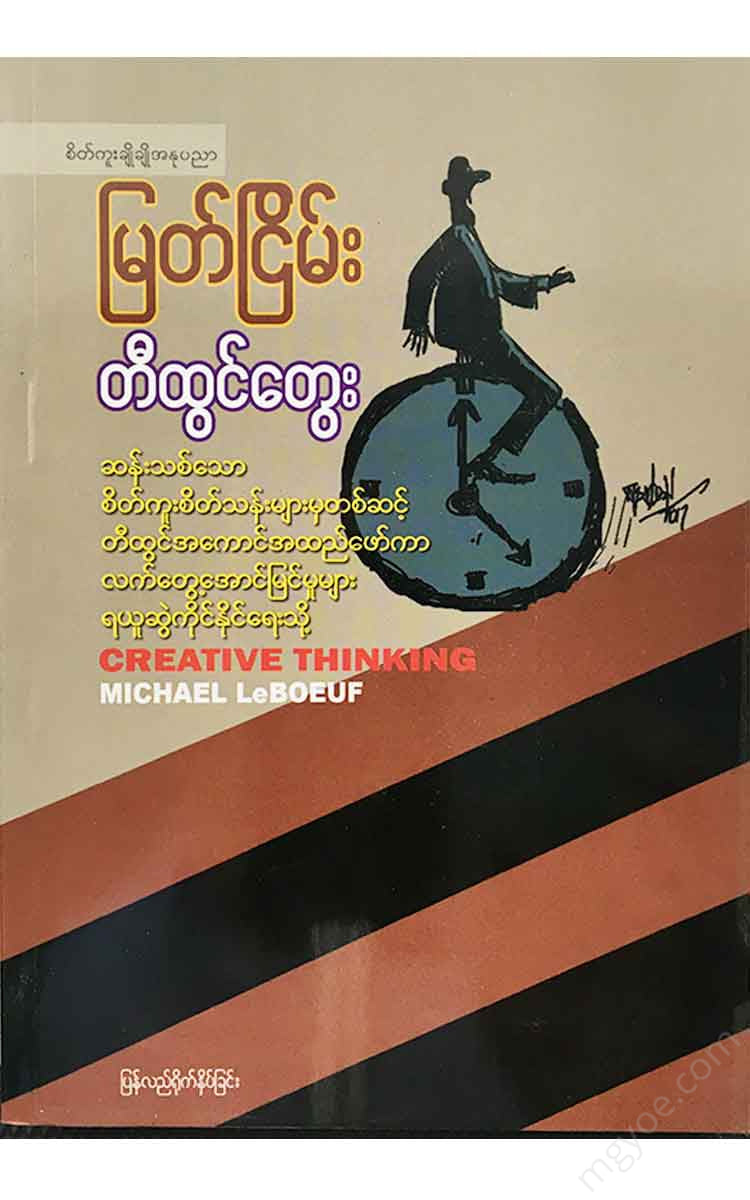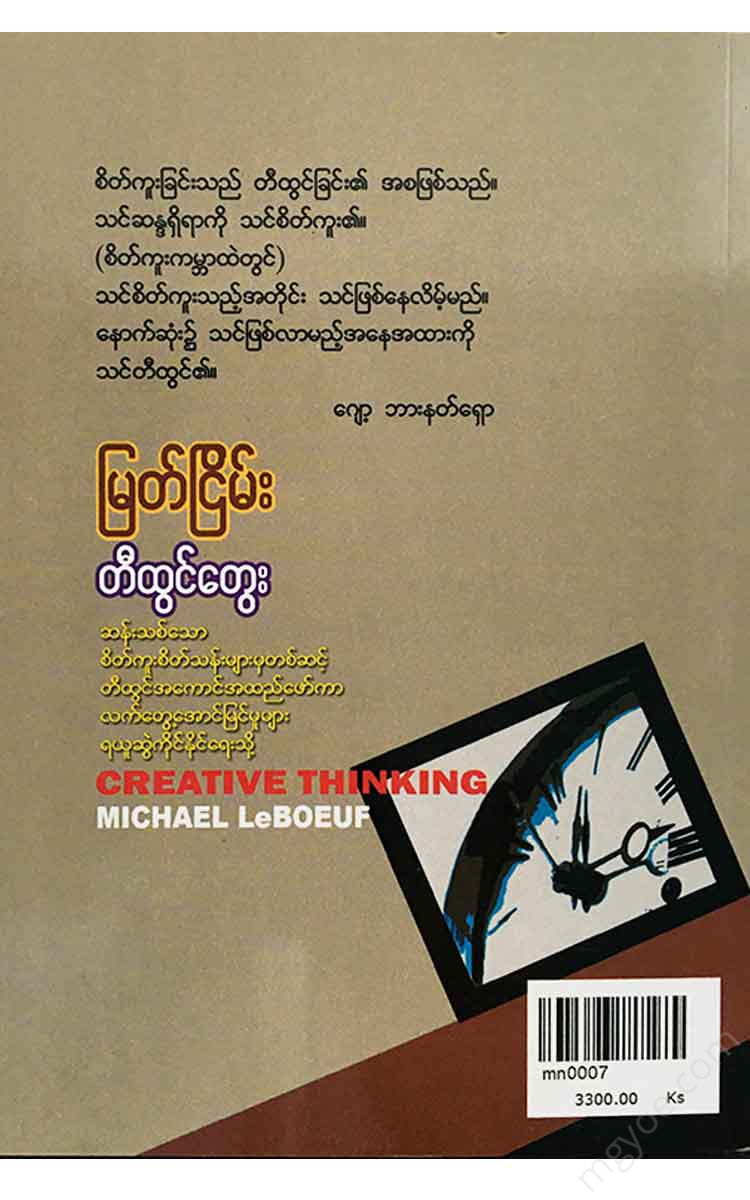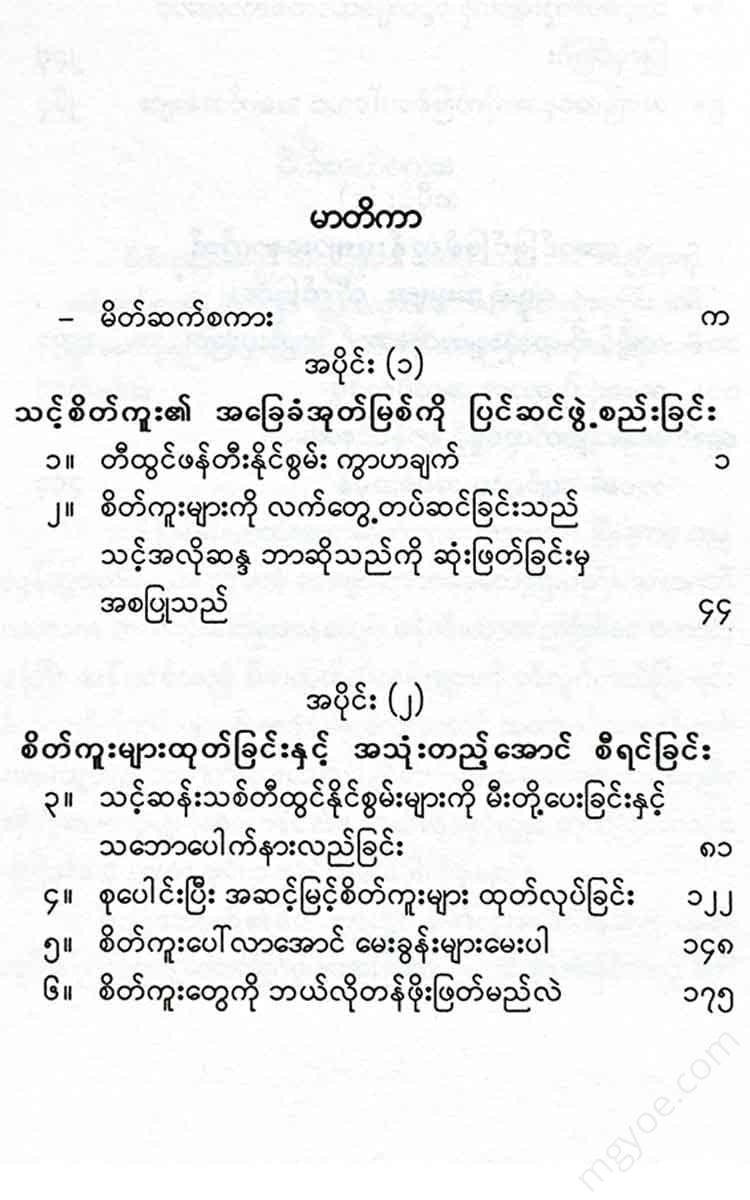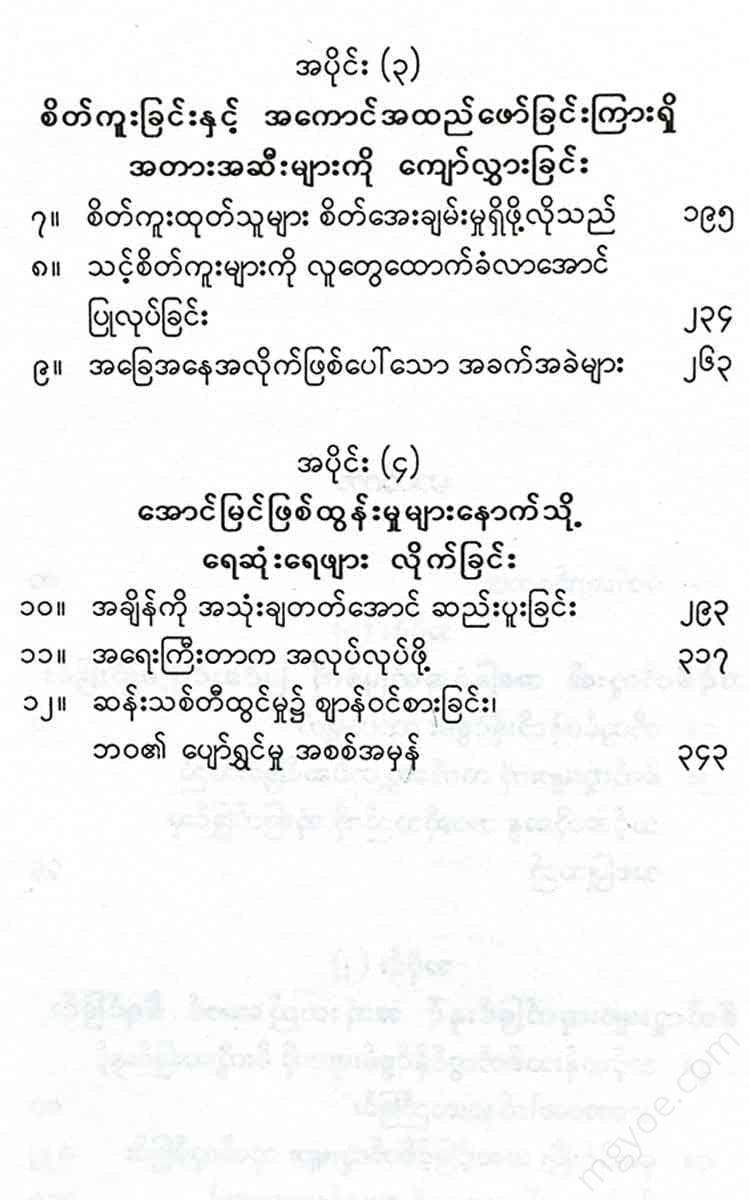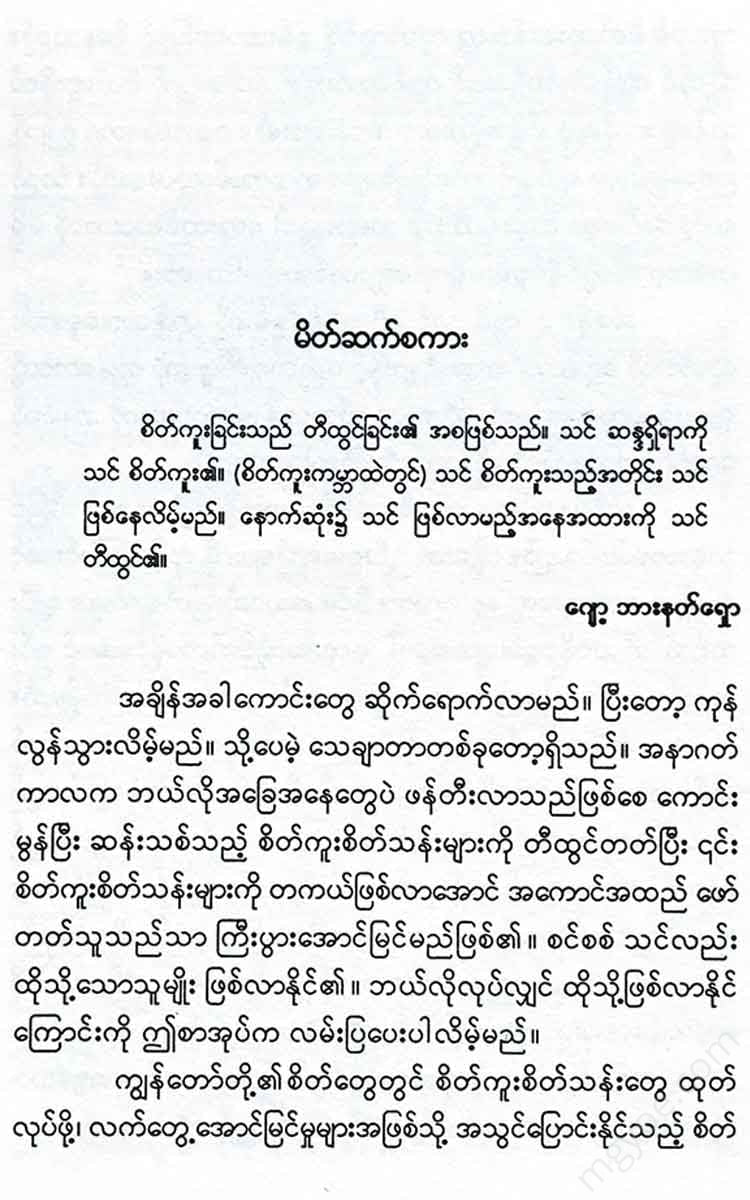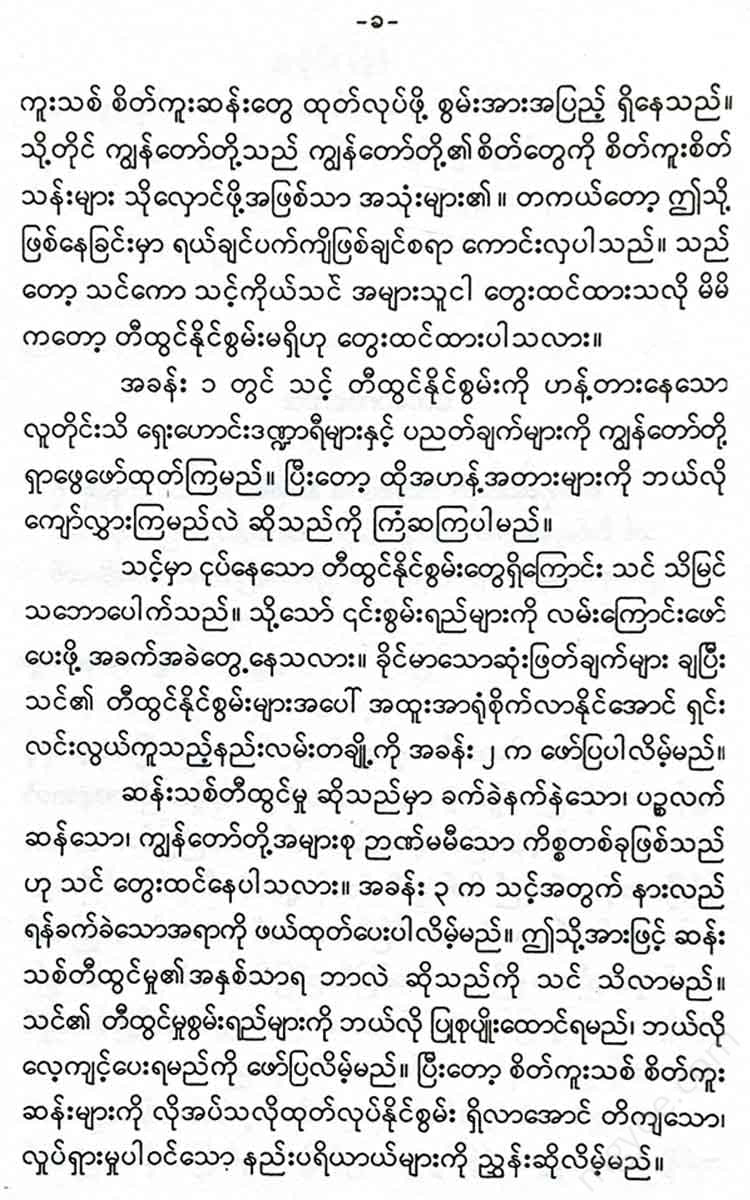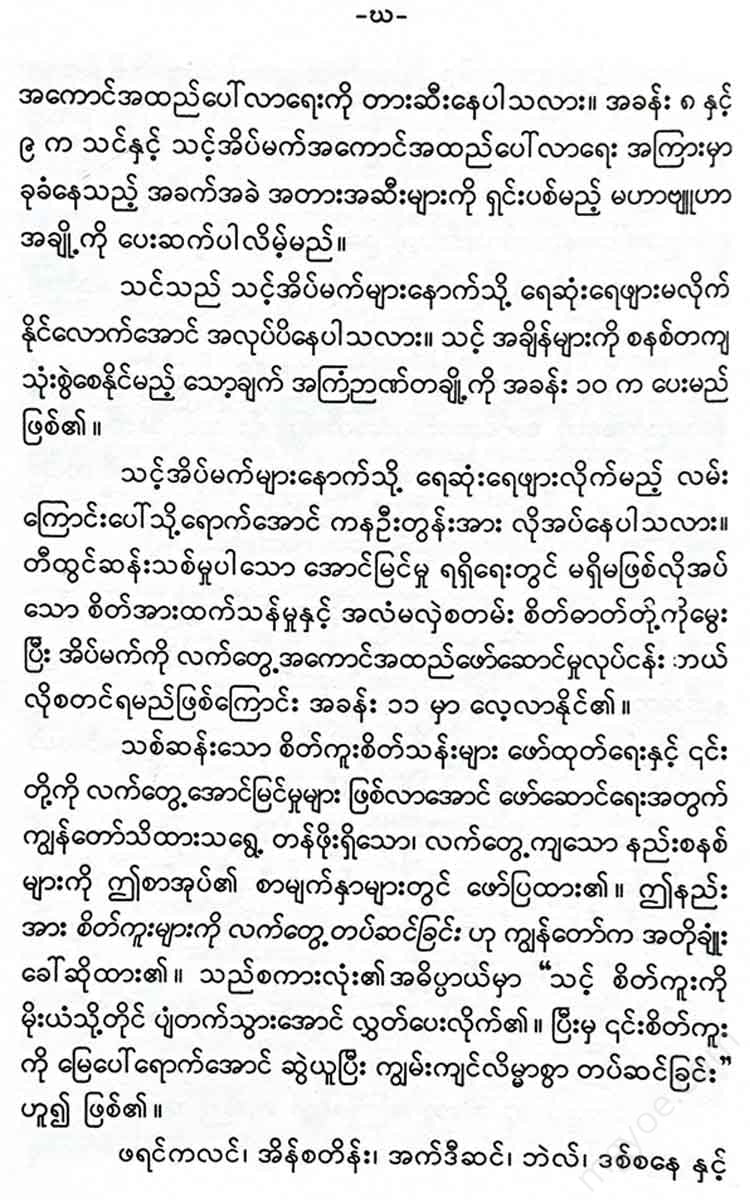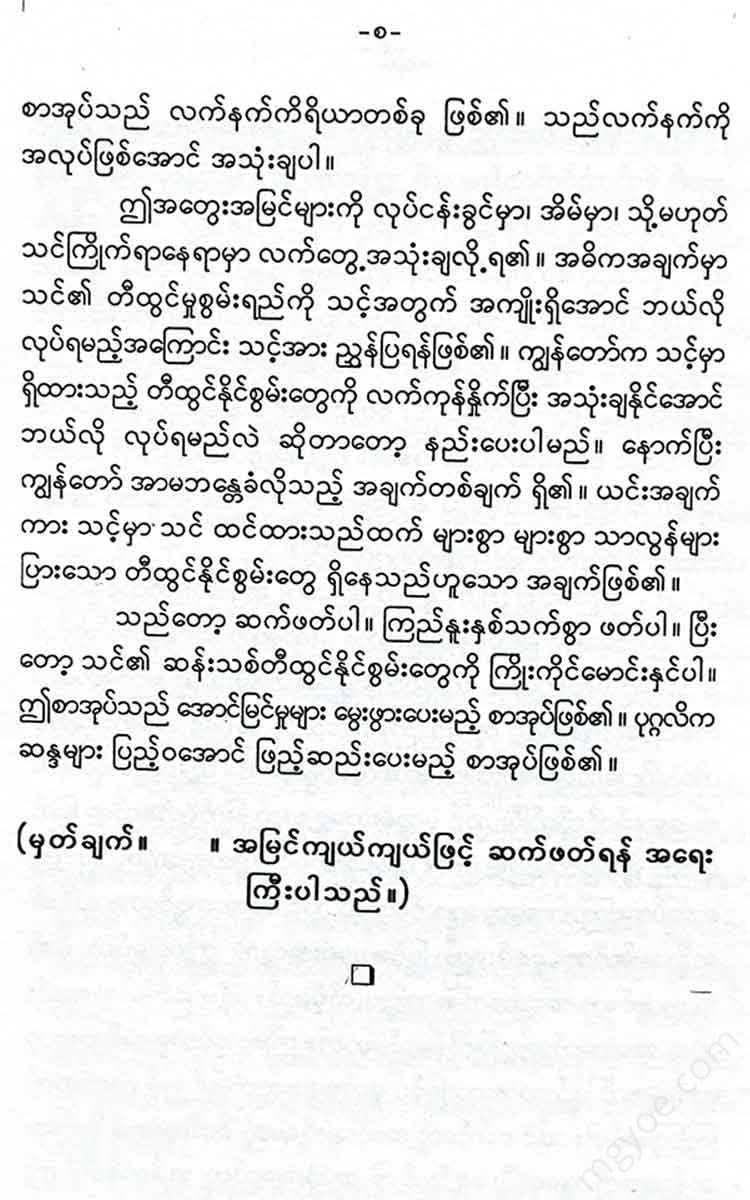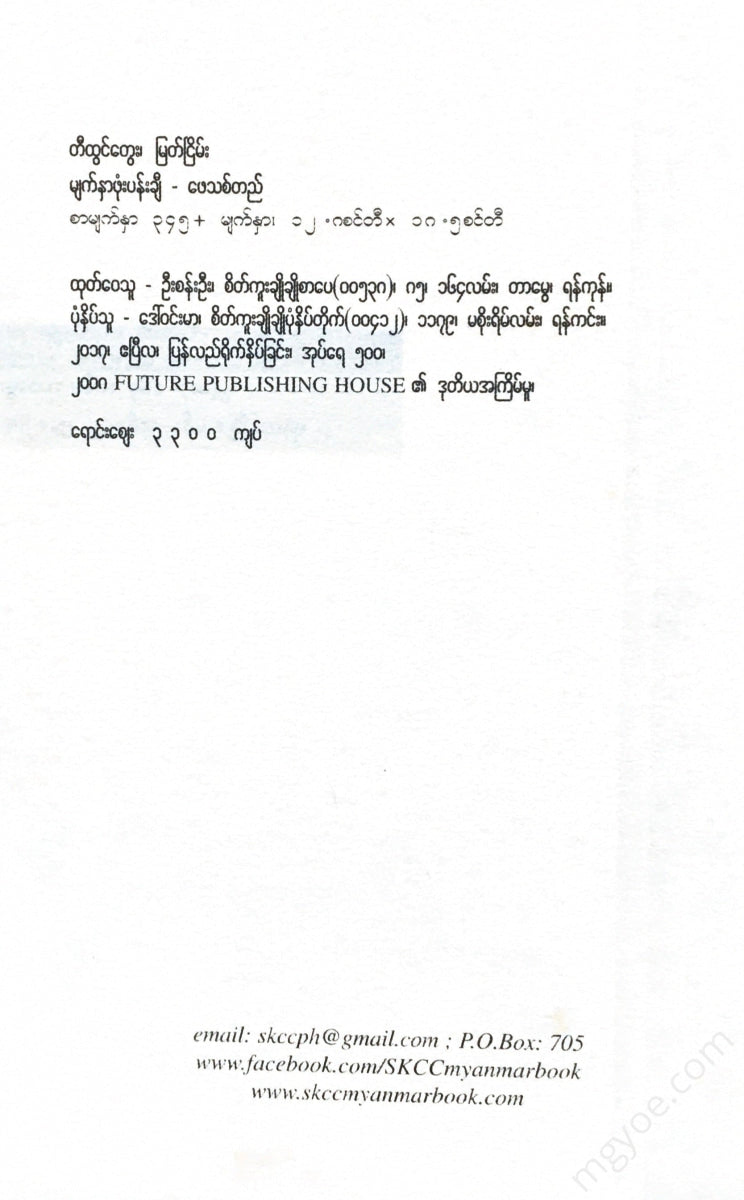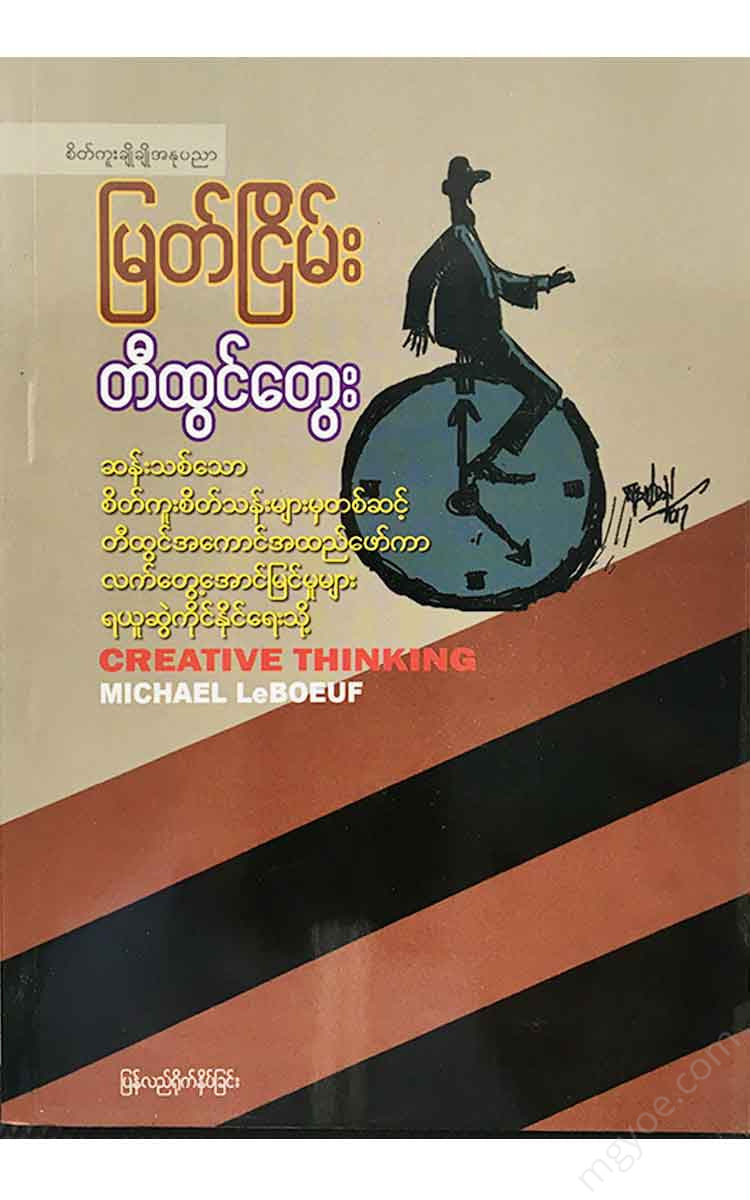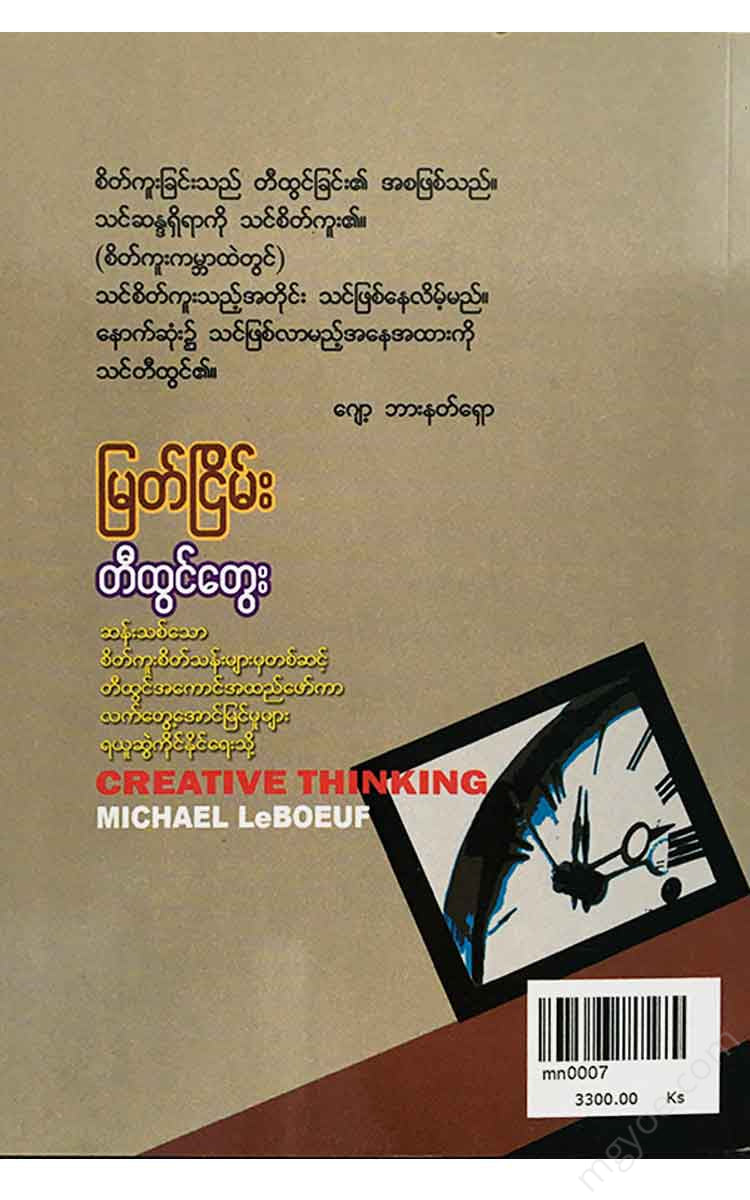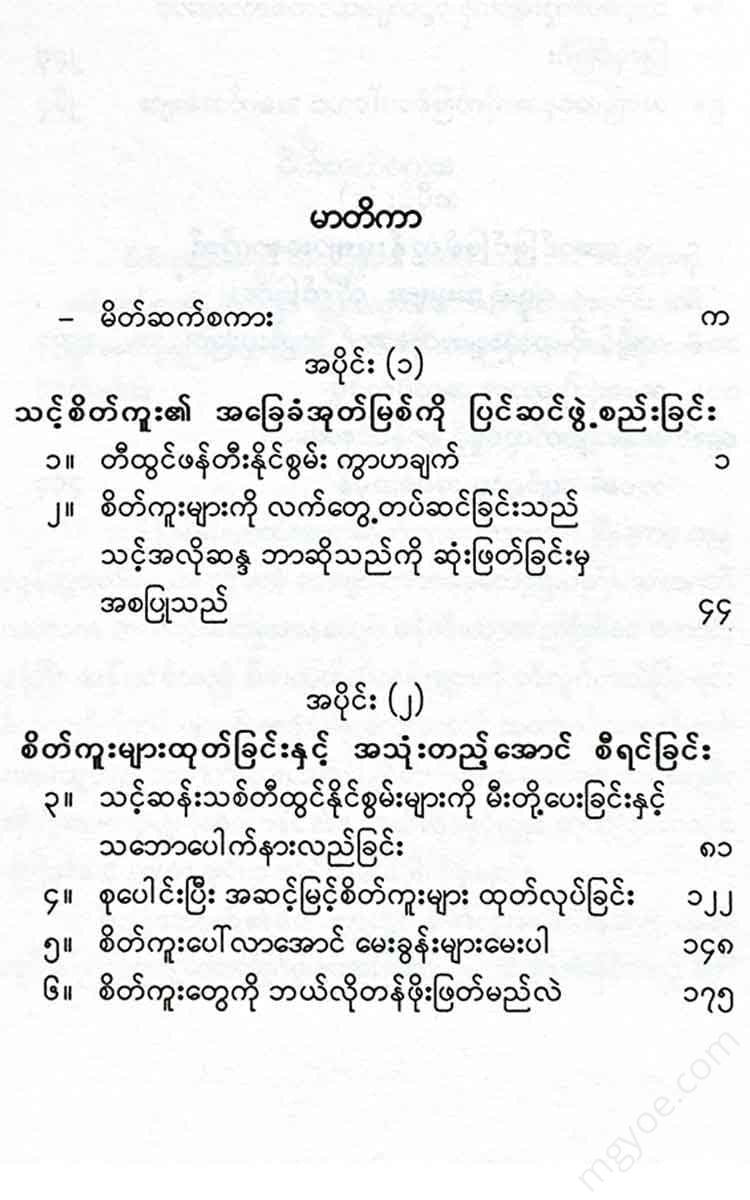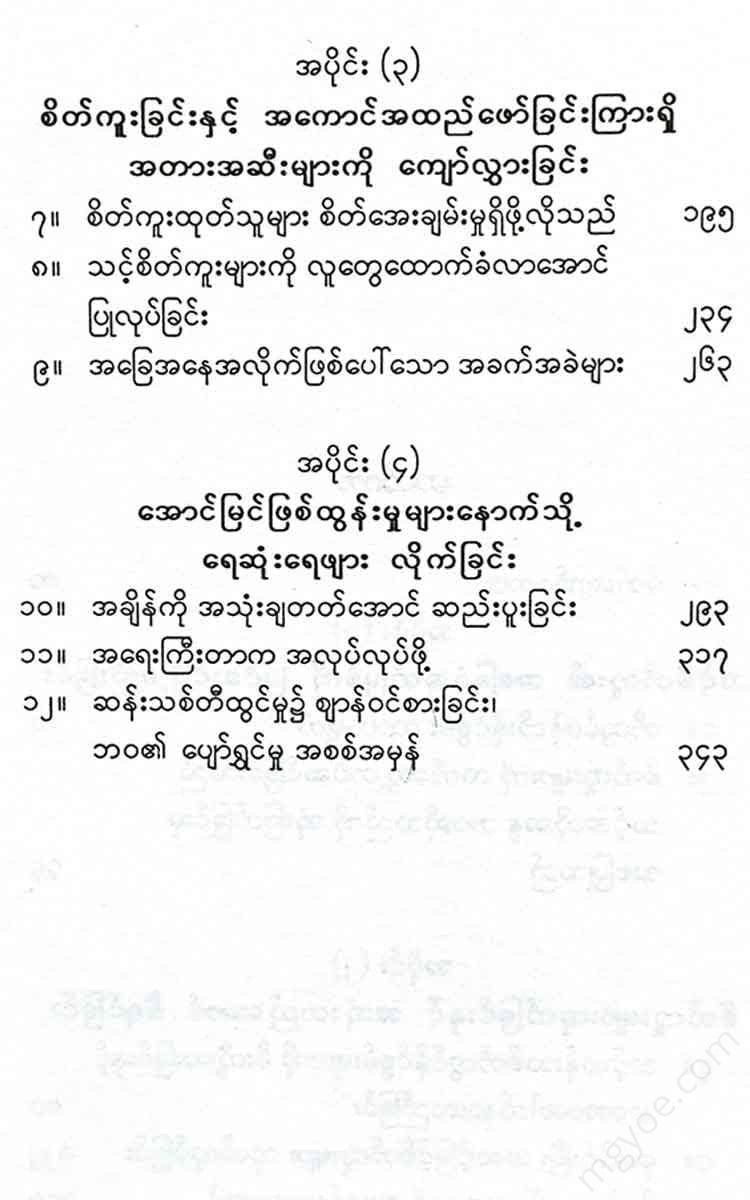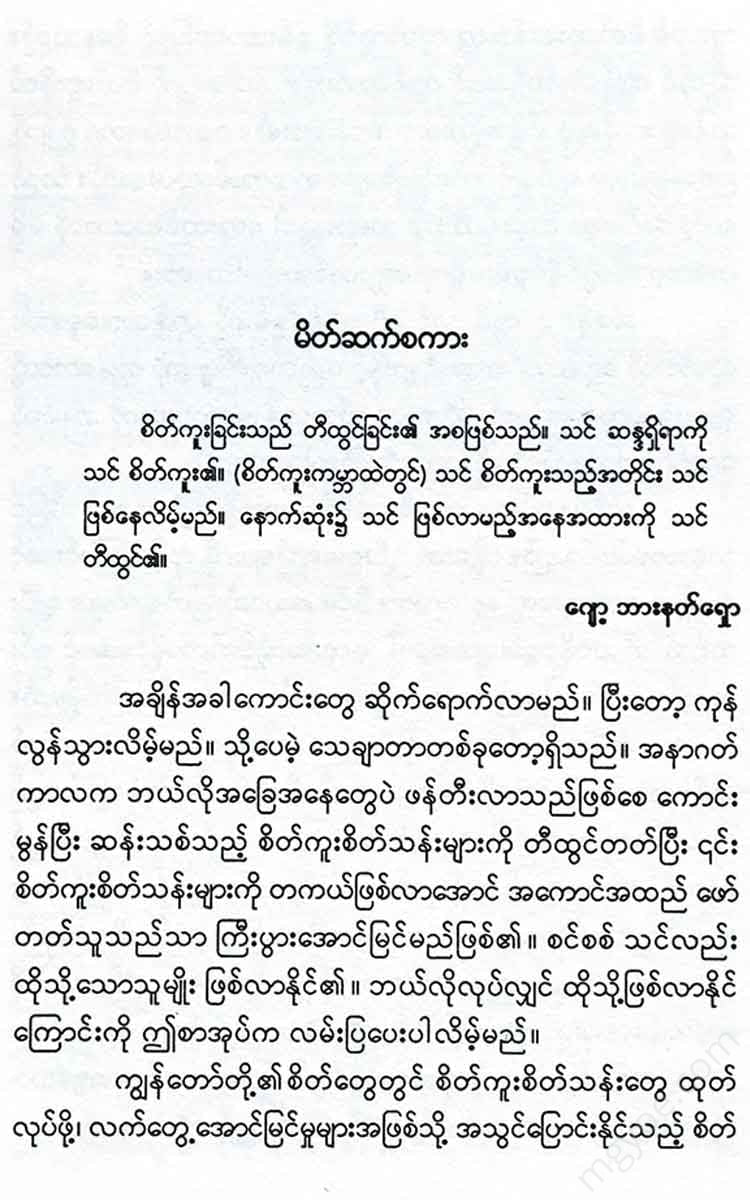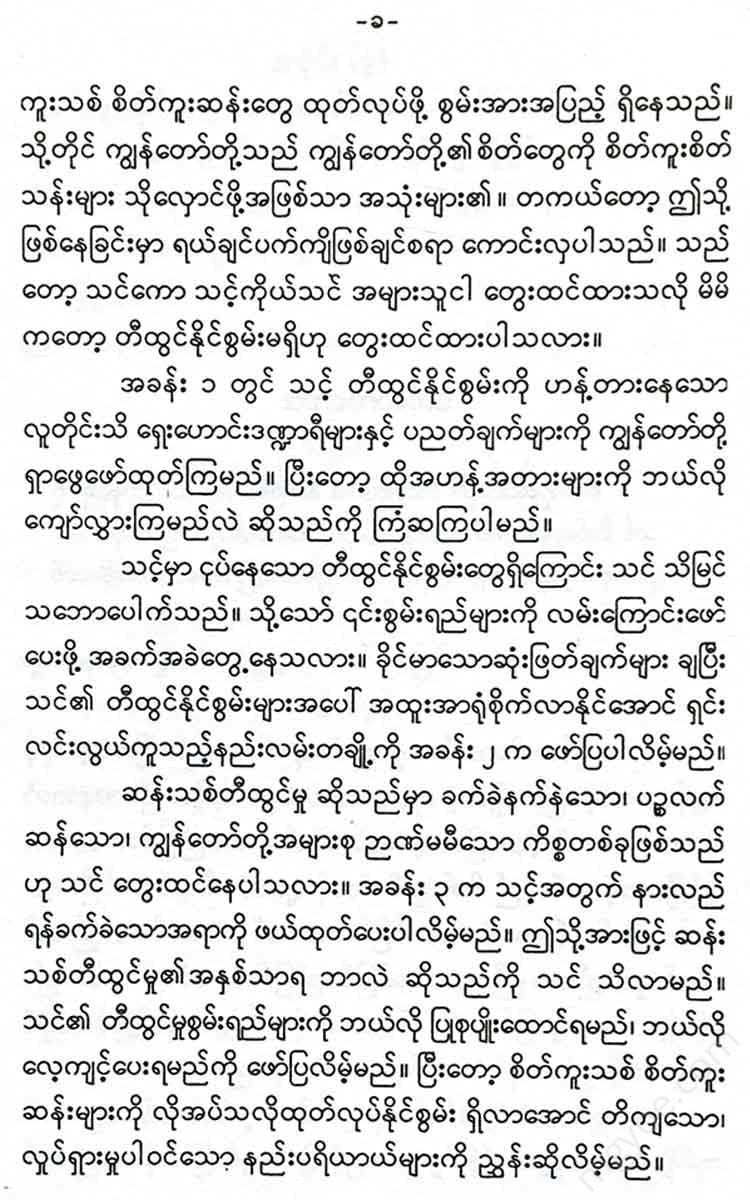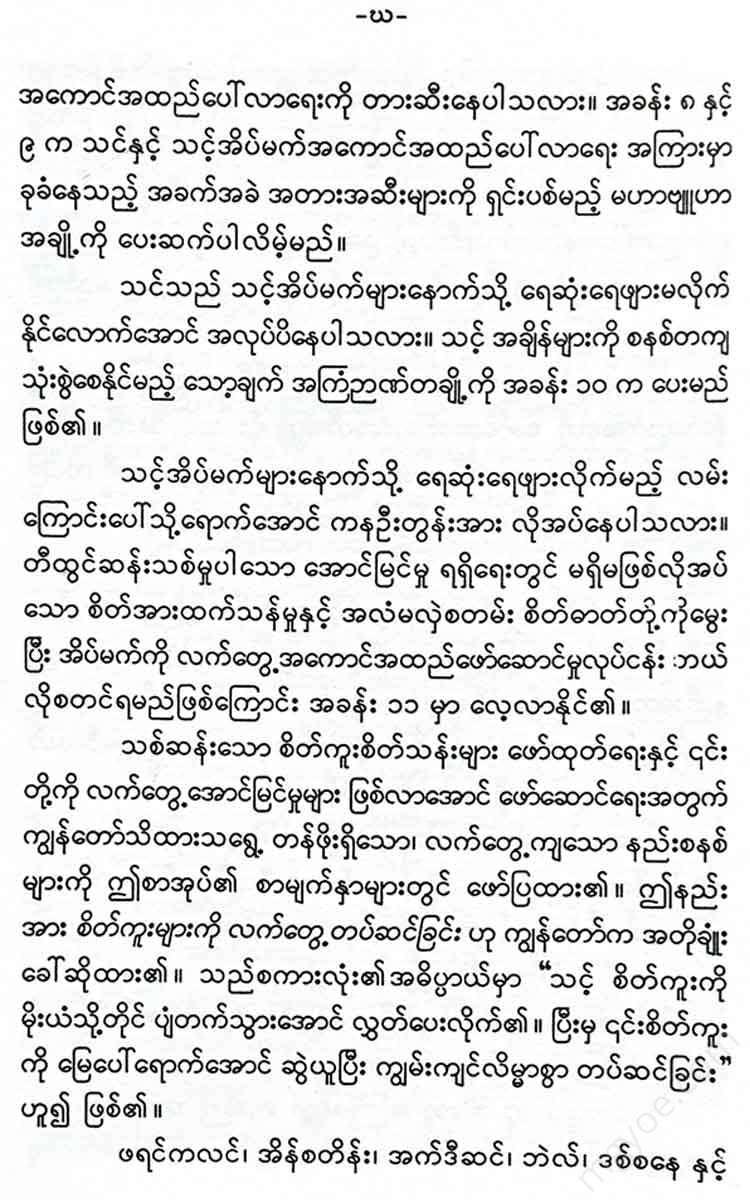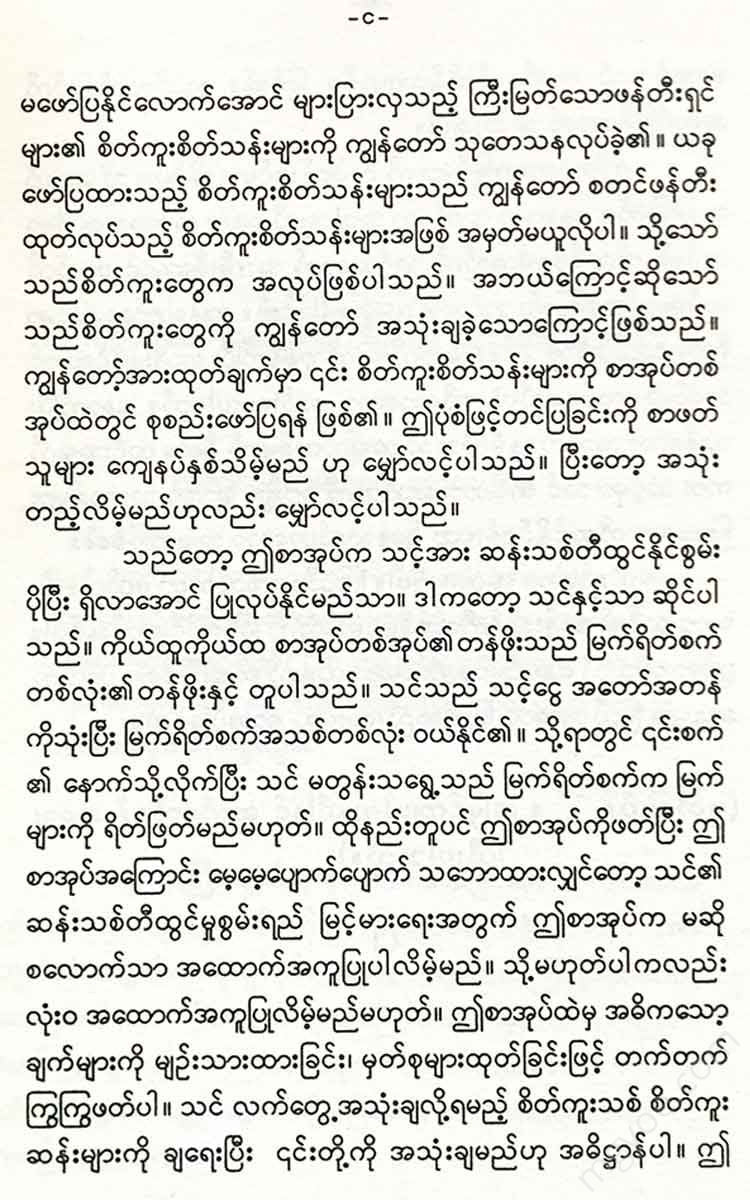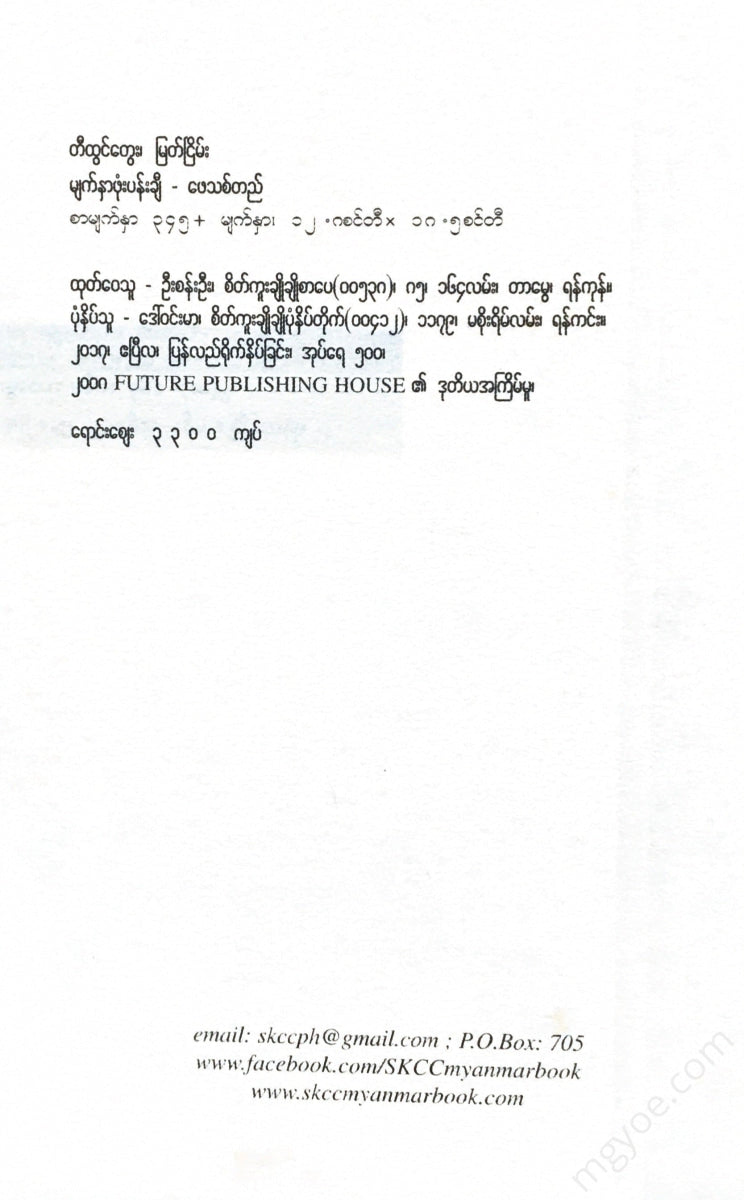စိတ်ကူးချိုချိုစာပေ
Myat Nyein - Creative Thinking
Myat Nyein - Creative Thinking
Couldn't load pickup availability
In fact, there is nothing elusive or mysterious about creativity. Anyone who can speak can write. Anyone who can see can imagine. And anyone who can think can imagine.
Steven Baker
There was a man who founded one of the largest and most successful hotel chains in the world. He had only studied for eight years. He was asked how he managed to be so successful in that time. He replied, “When a man is uneducated, he has to use his brain.”
A young man applying for a job at Macy's was turned down out of hand, saying there were too many applicants. The young man, unashamed and unashamed, walked around the mall and then called the director of human resources.
“I want a job. I’ve been looking around the mall for hours, looking for places where I can help. I’ve made a list of ten places where I can be used right now. Should I come up and tell you where they are?”
Needless to say, the young man was soon hired as an intern at Macy's.
A mother was constantly scolding her children for their lack of interest in practicing the piano. She thought there had to be a better way to motivate them than by scolding them. So she bought a notebook and a box of colored stars. Then she set new rules for piano practice. Each child who practiced the piano on their own had to mark the time with a timer on the stove in the kitchen. Every fifteen minutes of practice, she would put a star in the child’s notebook. At the end of the week, the child with the most stars would receive a prize.
Not only did their children's piano skills improve, but their sense of personal responsibility also improved.
These are stories of people who have used their creative talents to improve their lives and the lives of those around them.
Imagination is our most powerful mental faculty. And the creation of new ideas is central to all progress.
Imagination - the oil wells of your mind
The importance of imagination has been recognized by nearly all the great minds throughout history. Consider the following three perspectives.
Imagination is more important than intelligence.
Albert Einstein
Imagination makes man the highest of creatures.
Shakespeare
Imagination rules the world.
Disraeli
The history and prosperity of the United States is directly linked to the talent and vision of its creative individuals. The names of Edison, Bell, Moss, the Wright brothers, and countless others fill the pages of our history books. In fact, they were wanderers, inventors, innovators, hard workers... in short, people who put great ideas into practice.
America’s future prosperity, indeed its very survival, depends on our ability to think creatively to solve the big problems we face today. But there are concerns that America is losing its ability to innovate. In this regard, Adley Stevenson, chairman of the House Subcommittee on Science, Technology and Space, said:
“This is a rich and resource-rich country. But the spirit of adventure and innovation in this country is drying up. When that happens, countries are doomed.”
He said, "His presentation is worthy of serious consideration."
Is there really a creativity gap?
If there is a creativity gap, what could be causing it?
One clue to uncovering the creativity gap is to examine our educational systems. To simplify, we can break down the basic functions of our mental faculties into four levels.
1. Observe, study and pay attention,
2. Memorization and recitation
3. Analysis and evaluation
4. Generate new ideas and anticipate
Sensing that which has been produced and does not yet exist
Because of the supervision of our new education system, we spend the first quarter of our lives trying to master the first three basic tasks. The fourth basic task has been almost completely neglected. We have spent countless hours reading books, following the teachings of our teachers and professors. Our teachers have taught us from “A” to B. The education system has tested us on whether we can memorize facts and figures and then come up with solutions when needed. We have been constantly tested on whether we know the rules. These rules have taught us to analyze, to evaluate, to criticize. But we have been given little opportunity to develop our creative abilities. Is it any wonder that we still think we are not creative? What should we think, We are taught how to think, but we are rarely given the opportunity to think creatively.
“You can observe a lot just by watching.”
The great philosopher Yogi Bara once said, "Try and observe the behavior of preschool children. You will see how much creativity they have. In fact, we are born with such abilities. The combination of curiosity and a bright imagination is the quality of a normal child. So think about the words that parents often say.
"Where did this girl get this idea?"
"How could he even think of such an impossible question?"
John J. Plock once commented as follows.
"When a child starts asking questions that have answers, that's when they're considered an adult."
When the time comes, children start school. Then their imagination gradually declines and other mental and intellectual abilities develop. We can only speculate as to why this is the case. However, one simple and obvious reason is that while the three mental abilities are being trained to develop, the fourth ability is neglected.
In fact, our creative abilities are the oil wells of our minds. We know that there is a lot of oil in the wells. However, the problem is getting this oil to the surface and transforming it into something useful.
Two minds become one mind
Dr. Roger Sperry and his students Michael Gazzaniga and Jerre Levy at the California Institute of Technology conducted brain research. Their research yielded an insight into the creativity gap.
Their experiments, which split the brain into two halves and investigated the ability to think, were a historic success. What they discovered was that everyone has two brains. Each half of the brain thinks in its own way and has its own perceptions. Just as we have two eyes, two ears, two hands, and two minds,
The left side of the brain thinks in terms of symbols and words, while the right side of the brain thinks in terms of sensory images. We use our left side of the brain for reasoning, judgment, speech, and mathematical skills. We use our right side of the brain for dreaming, experiencing emotions, visualizing, and intuition.
Remembering someone's name is a left-brain task, while recognizing their face is a right-brain task. Reading a book to become better at tennis or golf is a left-brain task, "enjoying the game."
